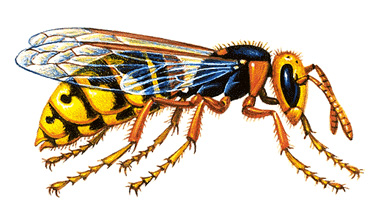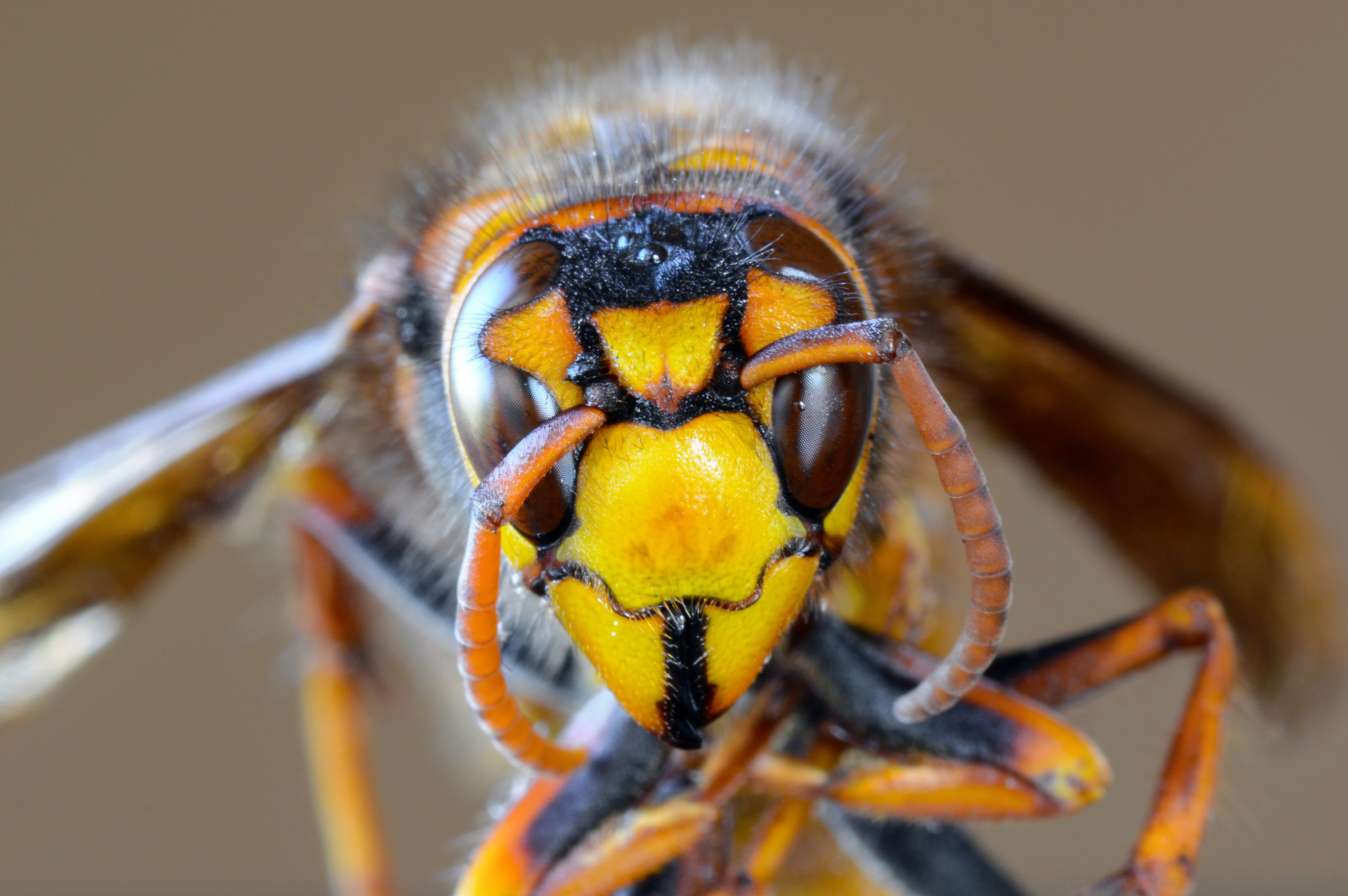Hornet is the name for any of several large social wasps. Hornets live in North America, Europe, and Asia, typically within northern wooded regions.

The nests of hornets consist of chewed up wood and plant fiber. Most nests hang in shrubs and trees, but they sometimes occur in buildings or even in the ground. A mated female called the queen starts to make the nest in the spring. She constructs several hexagonal cells and lays an egg in each one. When the eggs hatch, she feeds the larvae. All the young of this first brood consist of females. They become workers who help the queen enlarge the nest, gather food, and rear additional broods. Hornets use their nest for only one season. But by late summer, the nest may grow larger than a basketball and may contain hundreds of adult hornets. In the fall, new queens and males are born. After mating, the queens leave the nest to hibernate in a protected location. The workers and males die after the first frosts.
Hornets will readily sting if disturbed. Stinging injects a venom (type of poison) that causes a painful swelling. Nevertheless, hornets are helpful insects. Workers capture flies, caterpillars, and other pests for the queen’s young.
The northern giant hornet is the largest hornet in the world. Queen northern giant hornets may measure 2 1/5 inches (5.5 centimeters) long and have a wingspread of about 3 inches (7 centimeters). The European hornet is nearly as large. It has predominant black and yellow coloring. Originally from Europe and Asia, it was introduced to North America in the mid-1800’s. The most common North American species, the baldfaced hornet, has a stout black body with white markings and a white face. The smallest hornet, the aerial yellow jacket, also inhabits North America. People often mistake it for a true yellow jacket.


